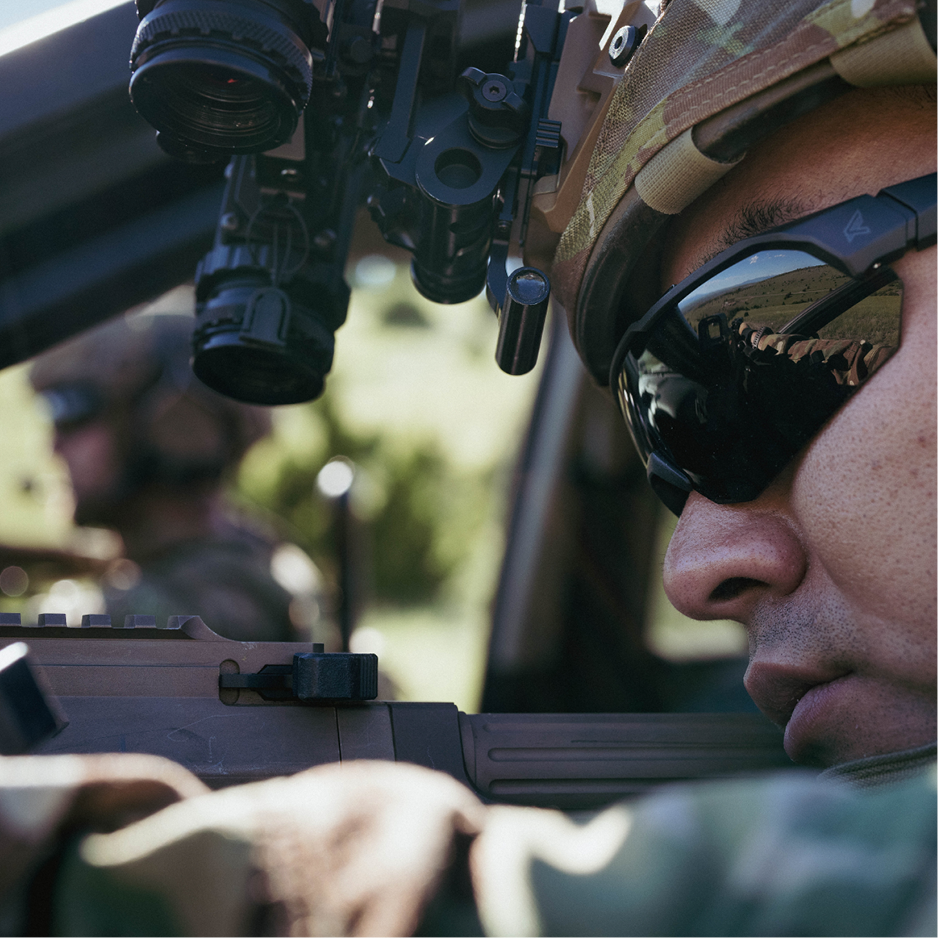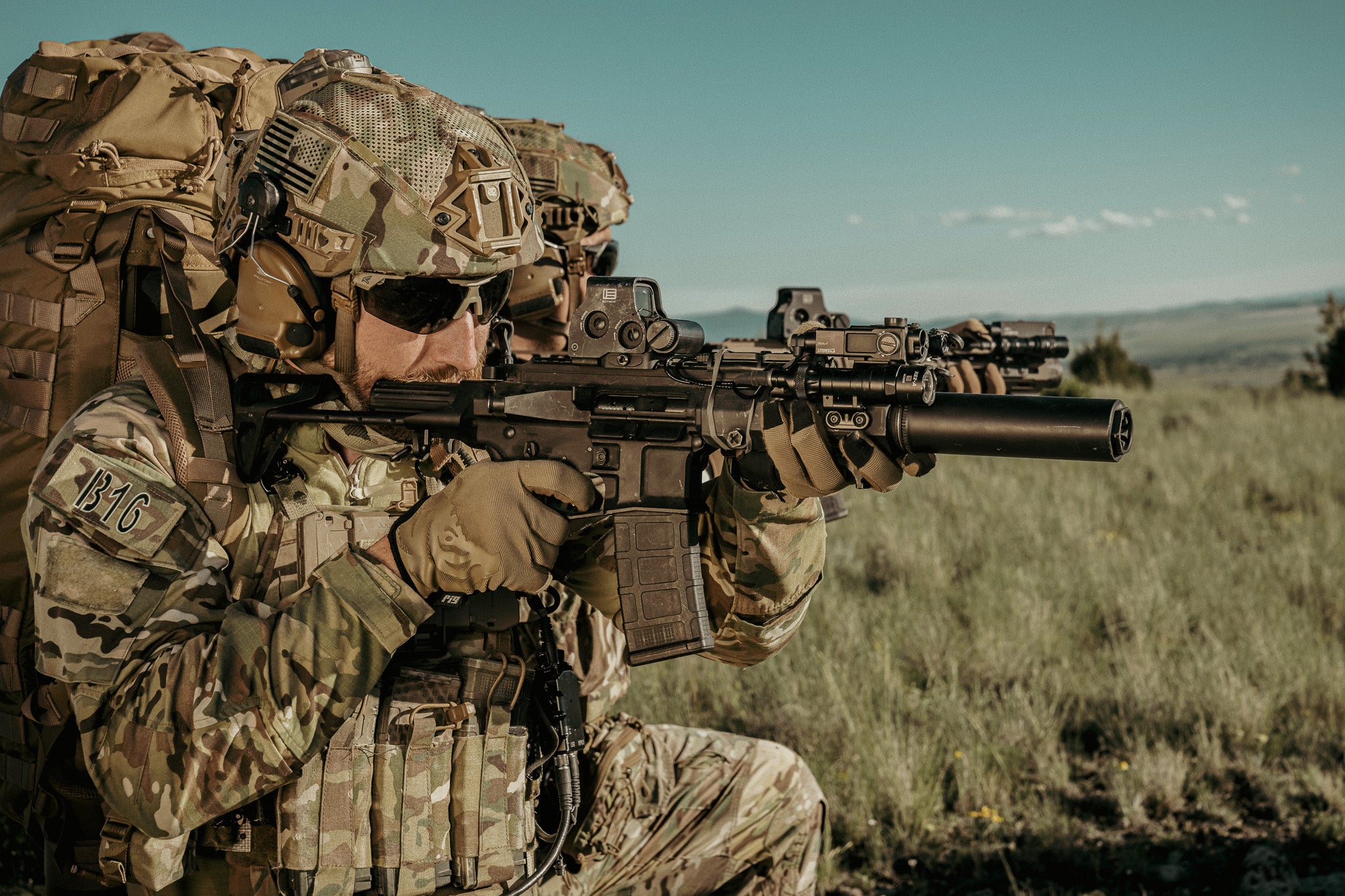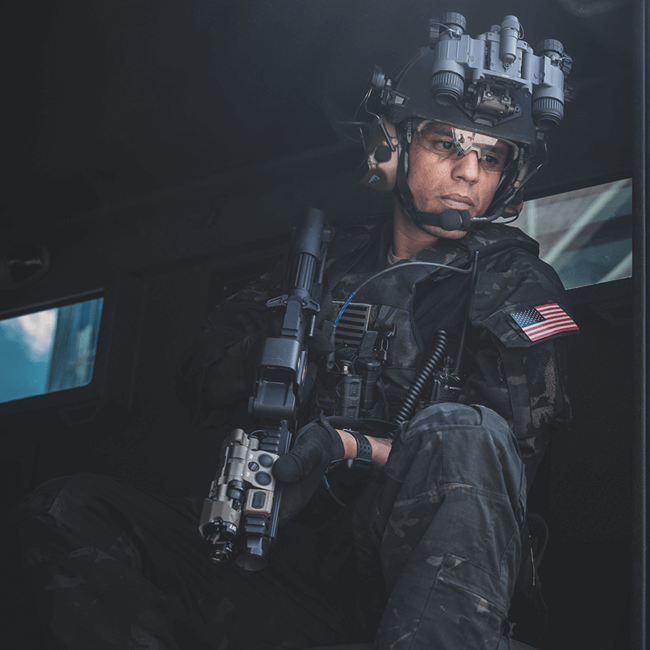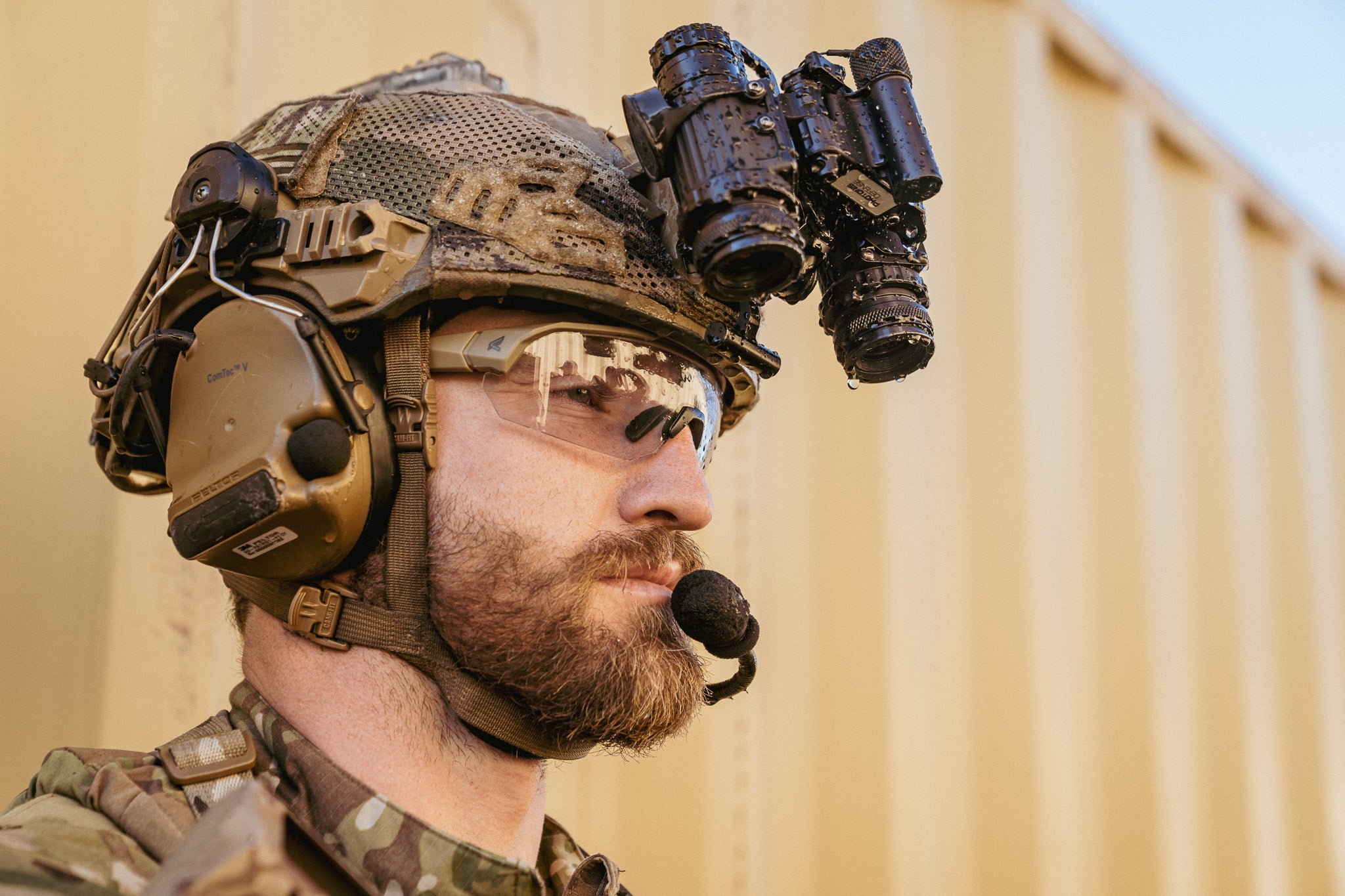FAQs
What’s the Difference Between Safety Glasses and Tactical Eyewear?
The risks to eyesight vary in each environment. Sitting on the couch at home? No worries (although you may want some blue light-blocking glasses for your nightly scrolling). At the shooting range? You’ll definitely want some ballistic-rated eye pro. Safety glasses and tactical eyewear differ in their respective impact resistance. Safety glasses are tested to ensure they can protect your eyesight against hazards found on jobsites, warehouses, factories or other industrial environments. Tactical eyewear, on the other hand, is put to the test to promise impact protection against the most extreme projectile velocities. The Military Combat Eye Protection System (MCEPS) standard tests glasses with a 22-caliber projectile traveling at 660 feet per second, whereas the American National Standards Association’s (ANSI Z87.1 and Z87.1+) requirements are at much lower velocities. In short, if you’re on a jobsite, wear safety glasses; if you’re on the range or on patrol, wear tactical eyewear (although you could always wear MCEPS eyewear on a jobsite for extra protection).
Why Wear Glasses for Shooting?
Needless to say, shooting poses many hazards–whether at the range, on a hunt or just plinking around with your buddies on the weekend. And your eyes are one of the most prone to serious injury. In fact, your eyes are your only naturally-unprotected organs. Wearing eye protection while shooting can help shield your eyes from injury associated with ejected cases, gun powder blowback, recoil and a myriad of other hazards lurking around the corner. Plus, impact-rated tactical eye protection that’s tinted can help shield your eyes from the sun and harmful UV rays when shooting outdoors–and just make your day that much better, really.
What is MCEPS and MIL-PRF-32432?
The Military Combat Eye Protection System (MCEPS) standard was created to meet the need for more robust impact and optical clarity testing for eyewear designed for use in battle. Eyewear tested for compliance with the MIL-PRF-32432 standard (a classification of MCEPS), must withstand the impact of a 22-caliber projectile traveling at more than 660 feet per second. Additionally, MCEPS eyewear needs to satisfy optically clarity and corrosion resistance testing.
What is the Best Eyewear for an Indoor Shooting Range?
If you’re like us, you’d rather plink outdoors than shoot at paper targets at an indoor range any day. But when it’s time to hunker down and stay dry, sight in a new scope or train, what shooting glasses should you turn to? Outdoor tactical eye protection is fairly simple – toss on your pair of tinted ballistic glasses. For the indoor range, however, you’ll want a pair of impact-resistant eye pro with clear or Tiger’s Eye lenses–depending on the lighting conditions in the facility. Some suggest an impact rating that at least meets ANSI’s Z87.1 standard (the rating for safety eyewear) for shooting glasses. However, it’s better to choose eyewear that satisfies the Military Combat Eye Protection System’s (MCEPS) strict testing protocols. This is similar to ANSI safety glasses, but ballistic eyewear can withstand projectile impacts of much higher velocities. Better safe than sorry. Plus, you can get tactical glasses at comparable prices as a quality pair of safety glasses. And some come available with interchangeable lenses, so you can more easily dial in your kit for the exact conditions.
What is Tactical Eyewear?
The risks to eyesight are never higher than at the shooting range, on patrol or in battle. Tactical eyewear is purpose-built to protect your eyes from airborne debris and projectiles traveling at extreme velocities (such as an ejected casing)–all while resisting corrosion from harsh chemicals and delivering optical clarity in virtually any environment. The best tactical eyewear offers fog proof technology, interchangeable lenses and anti-slip frame details to keep them secure.


























